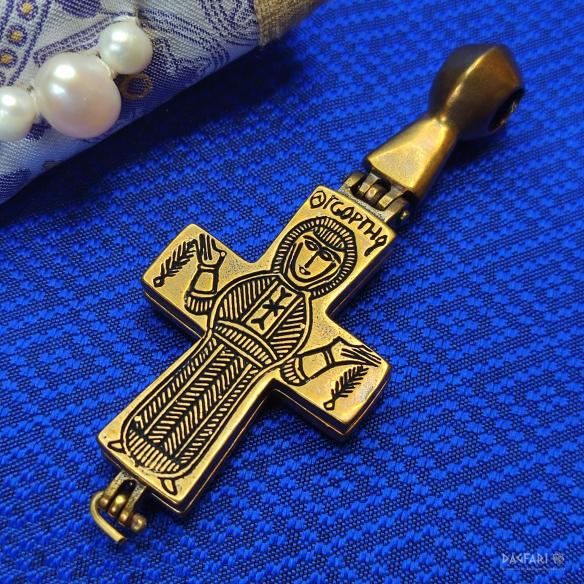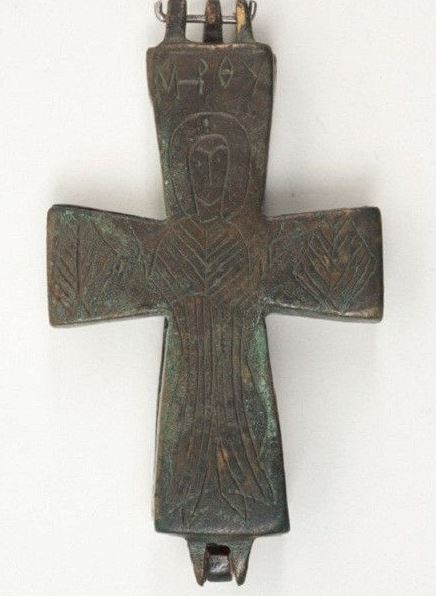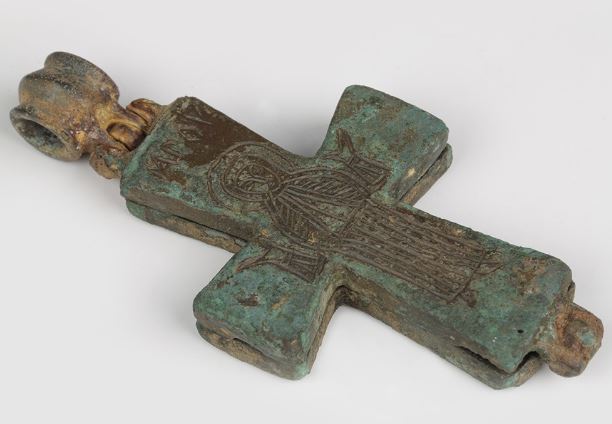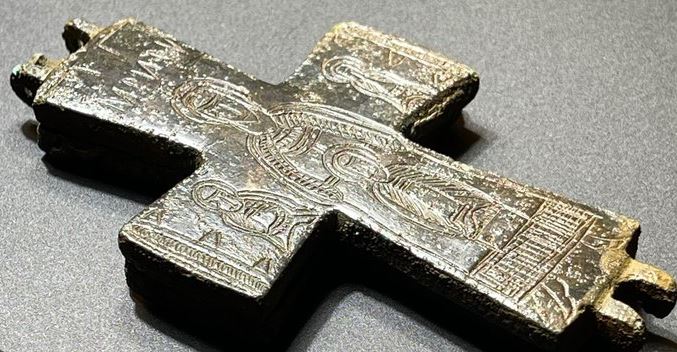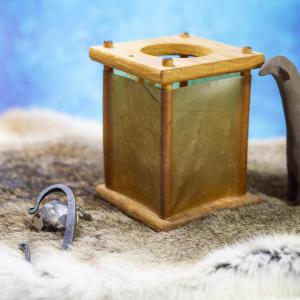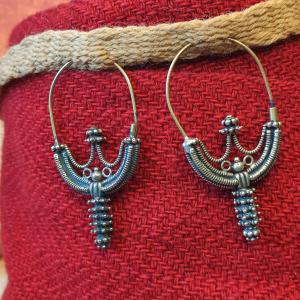Shopping Cart
Various reliquaries for the relics of saints or pieces of leaves from the Bible were already popular in the early Middle Ages. Seventeen such crosses dating back to the 10th-13th centuries have been found in the Czech Republic alone.These typical opening two-part crosses can still be seen today on the Eastern faithful in virtually unchanged form. The saints are depicted here in a simplified position, wearing long robes with the typical inviting and conciliatory gesture.
On this one is (technically incorrectly) written ΓΕΟΡΓΗΟΣ [GEORGEOS] - this again confirms the theory of copies, where the lithographer/engraver could not write and was rubbing by eye what he saw.
There have been many such crosses with only minimal changes. So one theory is that they could have been worn by wealthy citizens as well as common soldiers. After all, the technique of metal casting was quite common at the time. However, due to the decoration of the back with almandine cabochons (Bohemian grenade), we can say that no ordinary soldier wore one of these. What you put in it, however, is up to you.
This cross is enclosed and snitted, but if you wish, it can be used exactly as it was chosen for since around the 10th-12th century. The rivet can be knocked out or unscrewed, the valuables inserted and the rivet re-set.
The legend of St. George and the Dragon was brought by the Crusaders in the 11th century and probably originated in Cappadocia, Turkey.The saint was very popular during the medieval period. As a dragon slayer, he was a protector against demons and the devil.Do you like legends, knights and dragons or are you looking for protection against evil forces? Then this medallion is perfect for you! :-)
Cross cast in silver Ag 925 is available on request, normally not in stock.
Gewicht: 29 g
Größe: 4 x 3 Kreuz, mit Öse 7,5 cm
Größe des Lochs zum Einfädeln: 0,6 cm

